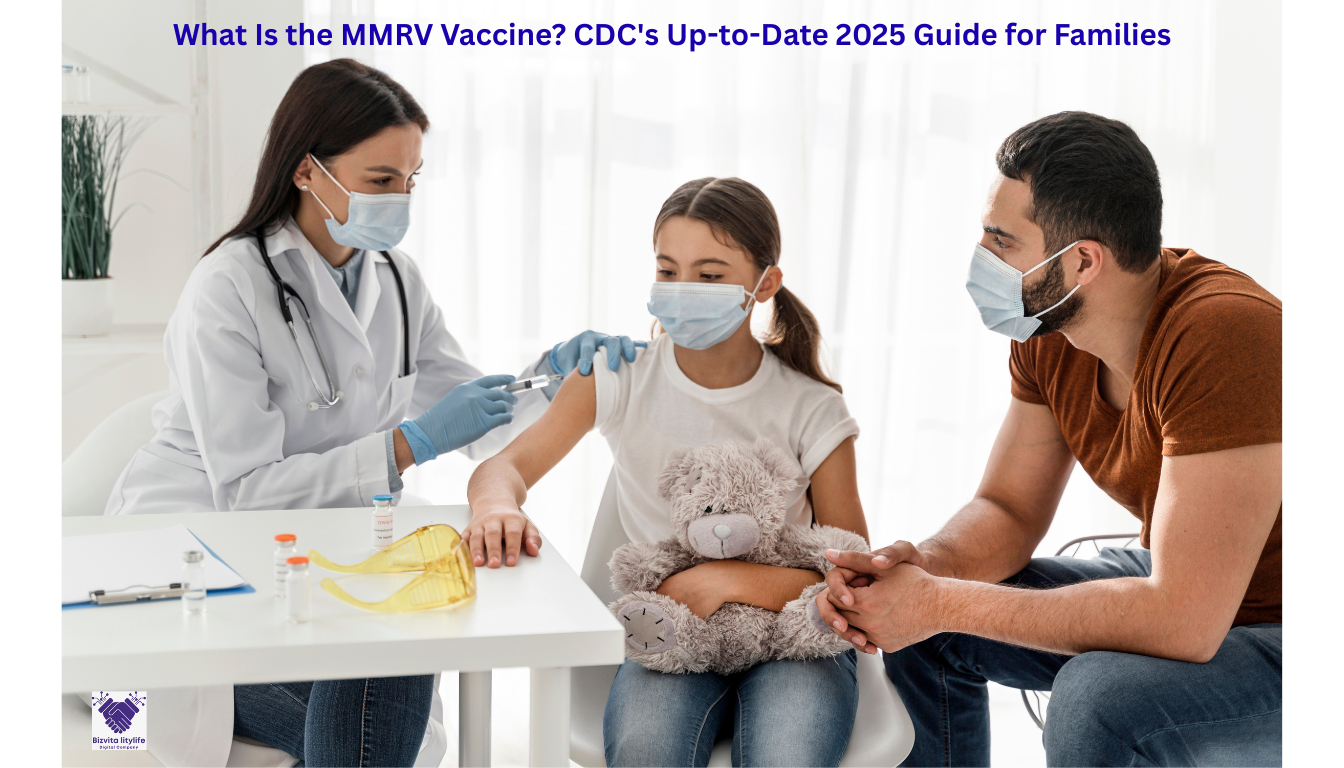What Is the MMRV Vaccine? CDC’s Up-to-Date 2025 Guide for Families
A Fresh Take on Why Families Should Pay Attention
Vaccines aren’t just medical tools—they’re family decisions that shape how we protect our children every single day. As parents, we juggle countless questions: Which vaccines matter most? When should kids get them? And how do we make sense of the updates that roll out each year? That’s where the MMRV vaccine CDC guidance steps in. It’s not just another update buried in health jargon—it’s a clear, science-backed path to preventing four serious diseases at once: measles, mumps, rubella, and varicella (chickenpox).
In 2025, the CDC continues to refine its recommendations, aiming to give parents a more straightforward plan to follow. What sets this vaccine apart is its combined protection, saving families from multiple shots while keeping children safe from illnesses that can still cause outbreaks today. By the time you finish this article, you’ll know not only what the MMRV vaccine is but also why it matters, how to approach the schedule with confidence, and what practical steps you can take to protect your family’s health.
What Exactly Is the MMRV Vaccine and Why Is It Important?
The MMRV vaccine is a single shot that protects children against four diseases: measles, mumps, rubella, and varicella. Each of these illnesses can bring serious complications if left unchecked, and outbreaks have shown us that they’re not just problems from the past. The vaccine combines two previously separate immunizations (MMR and varicella) into one, cutting down on the number of injections kids need. That’s a win for both children and caregivers, making the vaccination process smoother and less stressful.
You might be wondering: why does this vaccine matter so much in 2025? Because even with medical progress, measles cases have been rising in some communities where vaccination rates are lower. Recent reports highlight how measles outbreaks in the U.S. during early 2025 have already resulted in hospitalizations and severe complications, as documented in the CDC’s measles update. The CDC emphasizes that this vaccine remains one of the strongest shields we have against these preventable diseases. By using a combination shot, doctors simplify the process and boost compliance, which means more kids are protected and fewer chances for outbreaks to spread.
- Protects against four major diseases in one shot.
- Reduces the total number of injections required for children.
- Plays a critical role in preventing community outbreaks.
- Backed by updated CDC recommendations for 2025.
How Does the CDC Recommend Families Approach the MMRV Vaccine?
According to the CDC, the MMRV vaccine is typically given in a two-dose series. The first dose is recommended between ages 12 and 15 months, while the second dose is advised between ages 4 and 6 years. These timelines aren’t random; they’re carefully chosen based on how a child’s immune system responds best. By completing the series, children are well-protected before entering school and being exposed to larger groups.
Parents sometimes wonder whether to use the separate MMR and varicella vaccines instead of the combination. The CDC guidance notes that both options are effective, but the MMRV can be more convenient since it means fewer shots. However, in some situations—like for very young children—the separate vaccines might be considered, especially if there’s concern about side effects such as fever after the first dose.
The bottom line? Following the CDC schedule ensures your child is protected at the right time. Choosing the combination or separate vaccines is something you can decide with your pediatrician, who will weigh your child’s age, health, and history.
- First dose: ages 12–15 months.
- Second dose: ages 4–6 years.
- Both options (MMRV or separate shots) are effective.
- Timing is designed for maximum immune protection.
Why Should Parents Prioritize the MMRV Vaccine in 2025?
It’s easy to assume that diseases like measles or mumps don’t exist anymore. But the truth is, outbreaks can and do happen, especially when vaccination coverage dips. The CDC continues to sound the alarm on measles, in particular, which spreads incredibly fast and can cause serious complications like pneumonia or brain swelling. By vaccinating, parents aren’t just protecting their own children—they’re helping shield entire communities.
Another challenge is falling vaccination coverage among young children. National data show that kindergarten vaccination rates for MMR and other required shots continue to decline, which leaves more children vulnerable to disease, according to KFF’s recent analysis. The MMRV vaccine is a powerful tool to counter this trend because it combines protection into one shot, reducing the chances of missed doses.
In 2025, the conversation around vaccines is also shaped by trust and clarity. Many parents want transparent, straightforward advice without the medical jargon. The CDC has responded by making its guidance more family-friendly and accessible. The MMRV vaccine stands out because it offers protection against four diseases in one go, making it an efficient and reliable choice in an era where families value both convenience and safety.
- Prevents severe complications like pneumonia and encephalitis.
- Helps protect communities through herd immunity.
- Supports higher vaccination coverage with fewer injections.
- Part of the CDC’s simplified, updated vaccine guidance for families.
How Can Parents Make the MMRV Decision with Confidence?
Making decisions about your child’s health can feel overwhelming. With so much information online, it’s easy to second-guess yourself. The good news is that the CDC has outlined a clear process that takes the guesswork out. Start by talking openly with your child’s doctor—share your concerns, ask about side effects, and discuss the difference between MMRV and separate doses.
Another tip is to plan for vaccine appointments. Children often receive multiple shots in a single visit, so understanding which ones are due can reduce stress on the day itself. Preparing your child with simple explanations about why they’re getting the vaccine can also help ease anxiety. Remember: the goal is not just to prevent illness but to build trust around healthcare from a young age.
Parents can also take comfort in knowing that the vaccine’s safety is monitored closely. Every year, updated data informs CDC guidance, which means families are not left behind as science advances. Confidence grows when you know the process is backed by decades of research and current real-world evidence.
- Talk to your pediatrician about timing and options.
- Prepare your child ahead of the appointment.
- Stay updated on the CDC’s yearly vaccine recommendations.
- Trust in ongoing safety monitoring and research.
Conclusion: Protecting Families with Knowledge and Action
We know that decisions about vaccines carry weight, and we respect the care families put into them. The MMRV vaccine CDC recommendations are not just medical guidelines—they’re practical steps designed to keep children healthy, schools safer, and communities stronger. In 2025, families will have clearer resources than ever to make informed choices, and that’s something worth leaning on.
Our takeaway is simple: don’t wait until an outbreak hits close to home. Start with a conversation with your doctor, follow the CDC schedule, and see the vaccine as both a shield for your child and a gift to your community.
Let’s keep moving forward together—protecting kids, supporting parents, and building healthier communities. Your next step? Review your child’s vaccination record today and schedule that appointment if it’s due.



